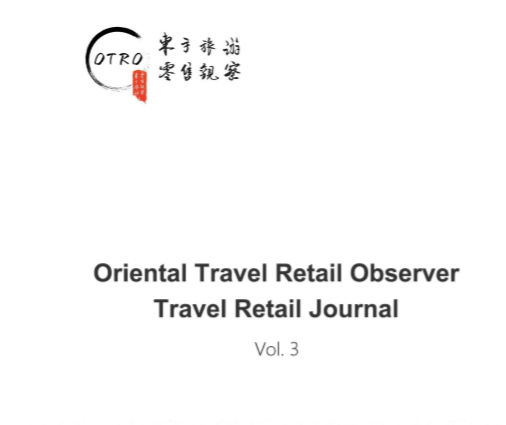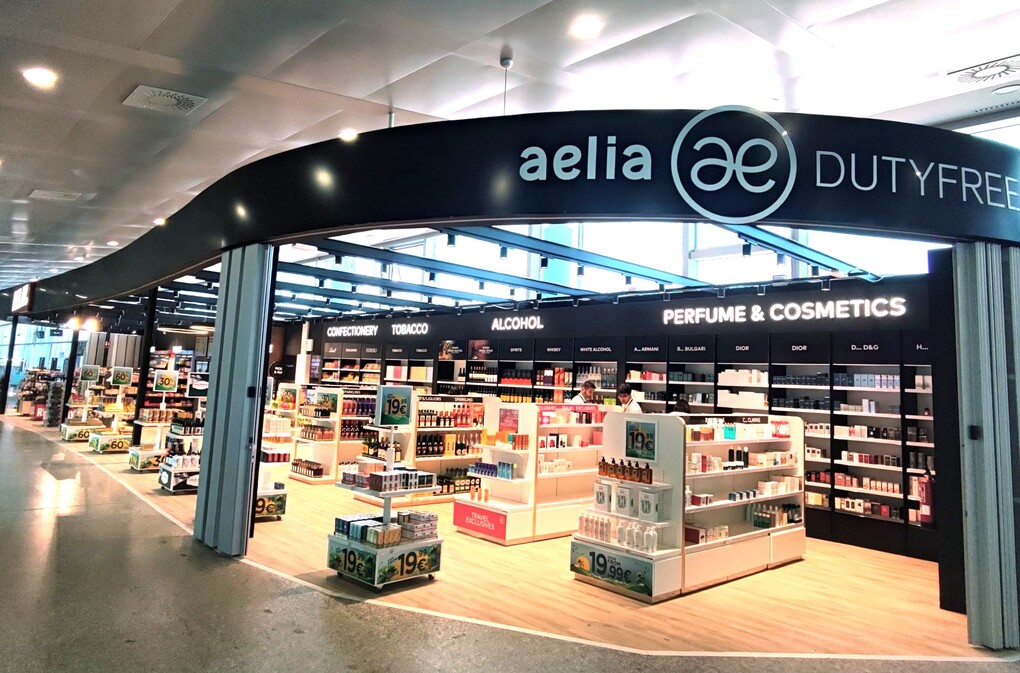 CHINA. The third edition of the Oriental Travel Retail Observer (OTRO), a research and publishing alliance between Jessica’s Secret, China Merchants Securities, and law firm Jincheng Tongda & Neal, has just been published.
CHINA. The third edition of the Oriental Travel Retail Observer (OTRO), a research and publishing alliance between Jessica’s Secret, China Merchants Securities, and law firm Jincheng Tongda & Neal, has just been published.
Please click here to access the full report.
As reported, OTRO’s publishers describe the project, launched in July, as a first for China’s travel retail industry in presenting regular industry research, big data analysis, Chinese consumer surveys, and legal opinions.
This edition focuses on the nature of and the relationship between the Chinese and South Korean travel retail markets. The relationship between those two channels – clearly the world’s two biggest in 2020 – is of critical importance to the future travel retail landscape in Asia. The report also examines the key Japanese travel retail market.
Once more the report includes interviews with two purchasing agents. The last edition featured two Korean daigou traders, this time around the interviewees are Japanese.
Here is the first of those interviews:
Carol: The Japanese purchasing service industry is deteriorating
Carol (alias) is a full-time housewife. Her personal income is mainly from her purchasing agent, and she earns an annual income of about US$28,940. Carol lives in Japan. She spends about JPY1.5 million (approximately US$14,100) on purchasing products for her Chinese customers every month.
Most of her purchases are products from Japanese local brands, under the categories P&C, baby products and medicines. Mostly, Carol visits the Japanese department stores, such as Takashimaya Department Store, Matsuzakaya Department Store and Mitsukoshi Department Store. The products are shipped back to China by mail or brought back in person by Carol herself, as she visits China over ten times every year.
In addition to purchasing in Japan, Carol occasionally travels to South Korea. She said that the price of goods in Japan has no competitive advantage over South Korea, with the exception of those sold in Japan only. It is understood that the prices of European and American products are very high in Japan, leaving no profit margin for purchasing agents. Even the Japanese brands (Suqqu, Fancl etc.) are priced lower in the Korean duty free shops, once launched, than in local Japanese shops.
For example, the actual price of a 230ml package of a very popular Japanese skincare product in Japanese shopping malls is US$217 (about US$94.34 per 100ml); while in Korean duty free shops, 330ml units of the same product are available for US$144.70 (about US$43.41 per 100ml), which is less than half of the price in Japan. As for the Japanese duty free shops, they price the European and American products lower than the shopping malls, but are still not competitive with Korean duty free shops.
Despite lack of price competitiveness, the Japanese purchasing agents survive because they have access to some Japanese products which are not supplied to the foreign duty free shops, especially those in South Korea. These products usually have some loyal customers, and are thus difficult to be replaced by competing products.
Compared with South Korea, Japan offers much smaller discounts. Carol introduced us to the four main ways to achieve the optimal prices when shopping in Japan.
(1) Cashback groups: In contract to the high overall cashback in Korea, the Japanese shops deliver much lower cashback rates. Carol explained that, in Nagoya where she lives, the cashback rate offered by any shop hardly exceeds 3.5%, and even a 3.5% cashback is very difficult for consumers to obtain.
Consumers need to purchase more in a designated store to get a higher cashback rate, yet there is a single product purchase restriction in the store (for example, each person is restricted to purchase 3 pieces only of each certain product), making it difficult for consumers to spend enough on the desired products to obtain high cashback rates.
Although Takashimaya Department Store and Lotte Duty Free in big cities like Tokyo offer a higher cashback, the cashback rate hardly exceeds 10%, which isn’t competitive compared to the duty free shops in South Korea, who could offer a cashback of up to 50%.
(2) Tax refund: Many stores in Japan have launched a tax cashback and an additional 5% discount for foreign consumers. The consumption tax rate in Japan is 8%, so that the consumers get a final discount of approximately 13%.
(3) Points cards: Consumers with department store credit cards earn points proportional to their consumption amount. These points can be directly regarded as equivalent currency for consumption (that is, 1 point is regarded as 1 yen). When a consumer spends a certain amount each year, his or her points earned for the whole year will be doubled. Carol said that consumers usually earn 7% of their consumption amount. Carol’s annual consumption amount always meets the requirement for double points, she actually earns points as 14% of her total consumption. When the points earned are used for consumption, it is equivalent to a discount of about 12%.
(4) Gifts: In addition to the promotions of the shopping malls, brands also launch activities to promote consumption. For example, some brands offer gifts for their member consumers, when they shop to a certain amount. These gifts are often not expensive in terms of money, but are specifically designed to be commemorative and not for sale.
On the implementation of the offshore duty free policy in Hainan, Carol believes that her purchasing business will not be affected in any way. Carol believes that the attractiveness of offshore duty free is mainly in the European and American products it sells, while many products that she purchases for her customers are sold only in Japan.
Nevertheless, the current situation is not optimistic for Japanese purchasing agents. Starting from April last year, the number of orders for Japanese purchasing agents has gradually decreased. Carol speculates the following reasons for the decrease in her orders.
(1) Domestic cross-border e-commerce platforms have squeezed a part of the market.
(2) Offline competitors, such as Mingtong Mall, have somehow obtained access to some Japanese products not sold in the duty free shops, and possess a price advantage over Japanese purchasing agents.
(3) Some Japanese products are launched in Korean duty free shops, with a lower price than in Japan, which also squeezes a portion of the market.













